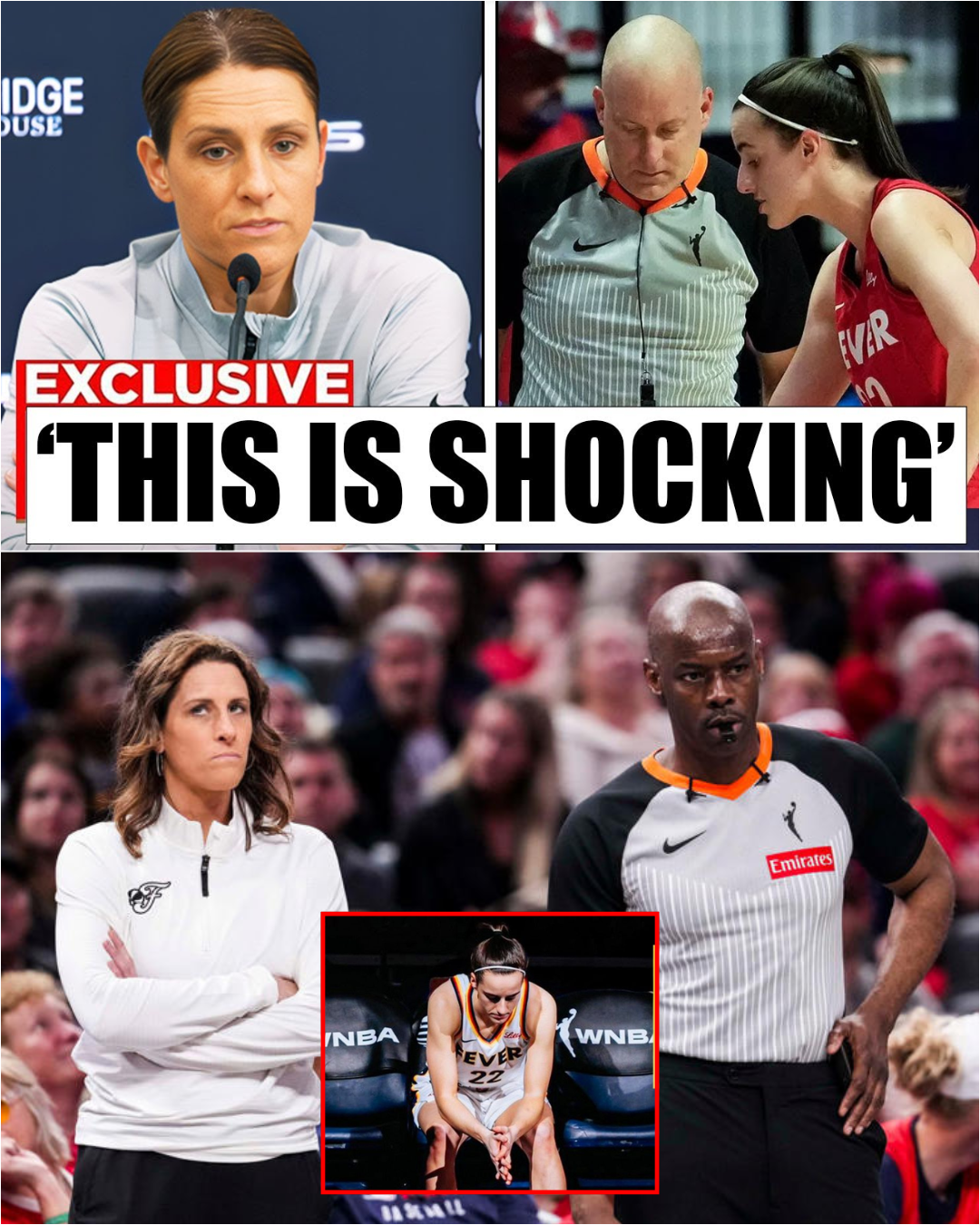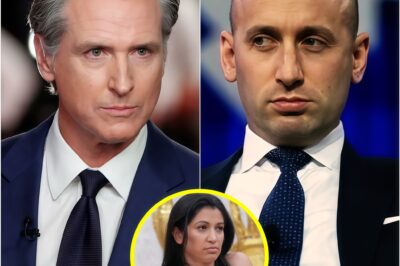Whistleblower: Inside the Referee Scandal That Pushed the Indiana Fever to the Brink of Boycotting the WNBA

It started as a game.
It ended as something much darker.
What unfolded on the court wasn’t basketball. It wasn’t officiating. It wasn’t even sports. It was something else—something that looked, sounded, and felt like sabotage in slow motion.
And now, sources close to the Indiana Fever say the team is considering something nearly unprecedented in professional basketball: a boycott.
Not because they lost.
But because they’ve lost faith in the system.
A League on Fire — and No One at the Wheel
The WNBA entered 2025 riding the highest wave of momentum in its history. Thanks largely to the arrival of Caitlin Clark, the league saw an explosion in viewership, sold-out arenas, and nationwide media attention. Finally, it seemed, women’s basketball was getting the platform it deserved.
But with that spotlight came scrutiny. And with scrutiny came receipts.
And in the last week, fans, analysts, and even former players have begun asking the same question:
What exactly is going on with the officiating?
What started as quiet grumbling has now become a chorus of outrage.
Because what happened in Indiana’s latest game wasn’t just a few missed calls.
It was a wholesale collapse of credibility.
“They Didn’t Even Try to Hide It”
That’s how one Fever assistant coach described it after the final buzzer. “It was like they weren’t even pretending anymore.”
Viewers saw it too. Live. In high definition.
Fouls missed. Fouls invented. Technicals handed out for blinking wrong. Contact ignored on one end, whistled immediately on the other.
And through it all, one player kept absorbing the punishment: Caitlin Clark.
Not just physically—though there were plenty of off-ball hip checks, shoves, and hits to the face.
But psychologically.
Clark, once again, was handed a technical for reacting after being fouled. Not taunting. Not throwing elbows. Just… reacting.
The message was unmistakable: You can hit her. She just can’t respond.
“This Is Not Basketball Anymore. This Is a Setup.”
That quote came from a former WNBA coach watching the game from home. And he wasn’t alone.
On social media, clips began circulating within minutes. Side-by-side slow motion videos of Clark being assaulted without calls. Freeze frames of officials staring directly at obvious contact—and doing nothing.
Within hours, #FixTheRefs and #JusticeForClark began trending.
Fans weren’t just angry.
They were exhausted.
Because this wasn’t the first game this happened.
It was just the most blatant.
Inside the Fever Locker Room: The Mood Turns Mutinous
Multiple sources have confirmed that the Indiana Fever locker room is no longer just frustrated—it’s radicalized.
“Enough is enough,” one player said, pacing postgame, according to a team staffer. “We’re not asking for favors. We’re asking for fairness.”
And according to two separate league insiders, the possibility of a boycott was raised—not as a stunt, but as a last resort.
The reasoning is simple:
How do you compete in a league that won’t even pretend to call the game fairly?
And how do you protect a generational star—your teammate, your franchise cornerstone—when the league itself refuses to do it?
The answer, increasingly, is: You don’t. You walk away.
Coach Stephanie White Reaches Her Breaking Point
In the postgame press conference, Fever coach Stephanie White didn’t even try to mask her fury.
“We’ve been patient,” she said. “We’ve played through it. We’ve tried every channel. And at this point, we’re done pretending this is normal.”
White, normally composed, had spent the game pacing the sideline like a woman on trial for someone else’s crime. Every whistle felt arbitrary. Every no-call felt personal.
And when the New York Liberty shot 32 free throws to Indiana’s 11?
That wasn’t imbalance. That was an indictment.
“It’s not about a bad night,” she told reporters. “It’s about a pattern. And if nobody else will say it, I will.”
Is It Incompetence—or Intent?
That’s the question haunting the league right now.
Are WNBA referees simply overwhelmed? Undertrained? Unprepared for the pressure of suddenly officiating in front of five million eyeballs and viral clips?
Or is something more sinister at play?
Sources inside the league office deny any bias. But their silence speaks louder than any denial.
The commissioner’s office has offered no explanation. No public acknowledgment. No disciplinary action. Just silence.
And that silence is becoming harder to ignore.
Because as one veteran broadcaster put it: “When you blow this many calls, this consistently, and always in one direction—it stops looking like error and starts looking like intent.”
The Fever Push Back: When a Team Decides Enough Is Enough
As the outrage spilled from the court to the internet, the Indiana Fever weren’t just licking their wounds. They were drawing a line.
And behind that line? The idea that if the league won’t fix this, they’ll stop playing.
Caitlin Clark: More Than Just a Rookie
Clark isn’t just a star. She’s a movement.
She sells out arenas. Triples viewership. She’s the reason the WNBA is making headlines outside its usual circles.
And yet, she’s treated like a target.
Every hard foul, every missed call, every shrug from the officials sends one clear message: this league isn’t ready for her.
“She looks tired,” one broadcaster said. “Not from playing basketball—from carrying this league while getting mugged every night.”
And when fans see her get hit and then penalized for reacting, they’re not confused. They’re furious.
The Referees Under Fire
The officiating isn’t just inconsistent. It’s a storyline now.
And that’s a problem.
Because the moment fans stop trusting the fairness of the game, the product collapses.
From phantom calls to absurd no-calls, referees are now a bigger part of the broadcast than the game itself. And not in a good way.
Every night, millions of fans are watching slow-motion footage of Clark being elbowed in the face while the refs stand inches away, frozen.
There’s no more hiding it. The camera never blinks.
The Commissioner’s Silence
While the Fever burn, the league’s top executive remains silent.
No press conference. No statement. No consequences.
Fans are noticing. Players are furious. And media outlets are calling it what it is: a leadership vacuum.
“If she’s not going to lead,” one insider said, “then she needs to go.”
Because if the people in charge can’t even protect their biggest asset, what’s left?
The Boycott Talk Gets Real
Internally, the Fever aren’t bluffing.
According to multiple team sources, the idea of sitting out a game—or walking off midgame—is very real.
Not as a stunt.
As a final act of protest.
“This is bigger than us,” one player reportedly said. “If we don’t take a stand now, when?”
A boycott would be risky. Fines. Suspensions. Backlash.
But it would also force a reckoning.
Because if the league can’t promise its players fairness and safety—then it doesn’t deserve them.
A Tipping Point for the WNBA
This isn’t just about the Indiana Fever.
It’s about what happens when a league grows faster than the people running it.
Caitlin Clark brought attention.
But attention brings accountability.
Now, every call is analyzed. Every no-call, magnified. The WNBA asked for the spotlight. Now they have to stand in it.
And if things don’t change—fast—the league may lose the very star who put them there.
Final Thought: Play Fair or Pay the Price
The Indiana Fever are fed up.
Their coach is speaking out. Their players are exhausted. Their fans are furious.
And Caitlin Clark?
She’s still standing. Still smiling. Still playing through it all.
But no one—no matter how great—can carry a broken system alone.
If the league won’t fix it, the Fever just might break it first.
And this time, no referee’s whistle can stop them.
News
EXCLUSIVE: I’ve Been Silent Long Enough — Colbert’s 8-Word Sentence Caught on Hot Mic Has CBS in Total Panic!C4
“I’ve Been Silent Long Enough” — Colbert’s 8-Word Sentence Caught on Hot Mic Has CBS in Total Panic The red…
Jamie Lee Curtis Accuses CBS of Silencing Her After Colbert’s EXIT — A Bold Allegation That Could Shake Late-Night TV”
In a stunning development that has rocked the entertainment industry, actress Jamie Lee Curtis has publicly accused CBS of silencing…
“HOW COULD YOU BE SO STUPID?” — Rachel Maddow EXPLODES on Karoline Leavitt in Blistering Live TV Takedown That Left the Studio Frozen It was supposed to be another routine political spar—until Karoline Leavitt made one false claim too many. In a moment now seared into MSNBC history, Rachel Maddow dropped her notes, stared her guest down, and delivered seven brutal words that ended the debate in an instant: “How could you be so stupid?” What followed wasn’t a shouting match—it was surgical. Maddow dismantled Leavitt’s claim piece by piece while producers struggled to keep the cameras rolling. The crowd went silent. Leavitt froze. And social media exploded. Now, even Maddow’s critics admit: that moment wasn’t just a correction—it was a reckoning.
A live MSNBC segment turned sharply confrontational this week when White House Press Secretary Karoline Leavitt made an unverified accusation…
“How Could You Be So Stupid?” — Rachel Maddow Shuts Down Karoline Leavitt After False On-Air Claim Sparks Instant Backlash
A live MSNBC segment turned sharply confrontational this week when White House Press Secretary Karoline Leavitt made an unverified accusation…
“I Don’t Care What You Think of Me” Robert De Niro Disarms Megyn Kelly with Eight Words That Redefined Silence on Live TelevisionThe moment didn’t explode.C4
The moment didn’t explode. It imploded — in real time, in total stillness, and on Megyn Kelly’s own stage. A…
“He Wants All Immigrants Out of America but He Can’t Even Keep Immigrants Out of His Wife.” — Newsom Destroys Miller With One Scandalous Line on Live TV
It wasn’t policy.It wasn’t personal—until it was. Gavin Newsom didn’t come to attack Stephen Miller’s marriage.But when the architect of…
End of content
No more pages to load











